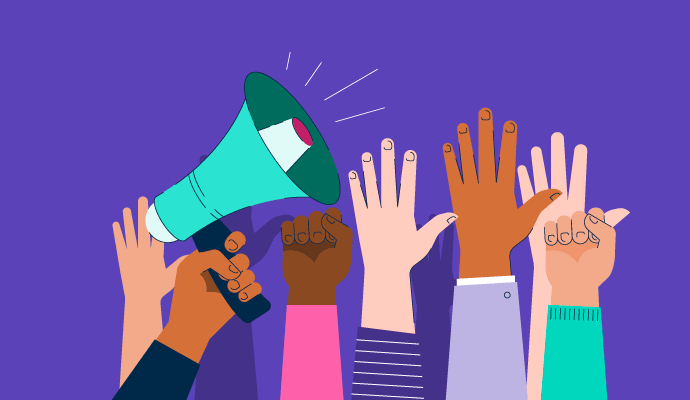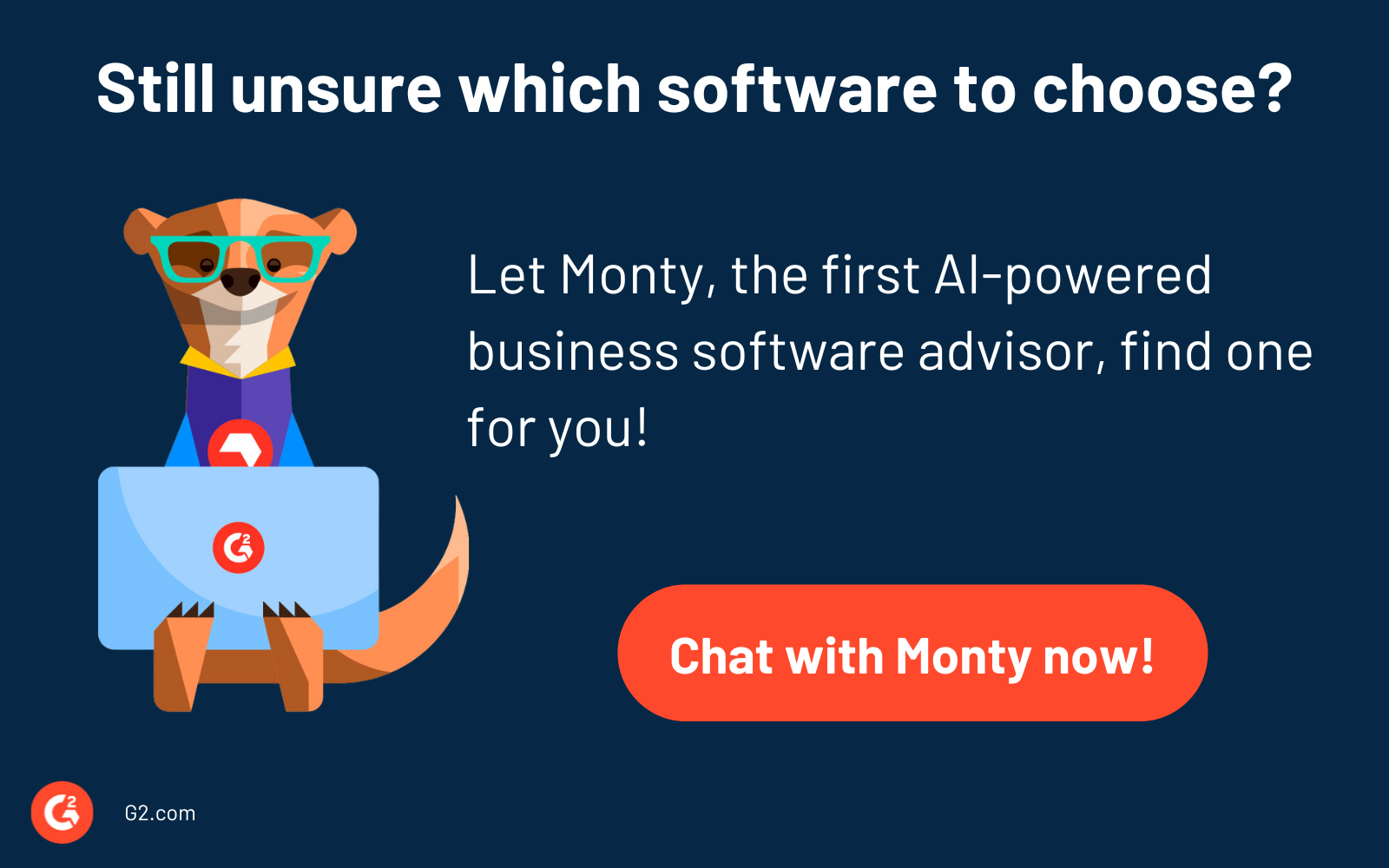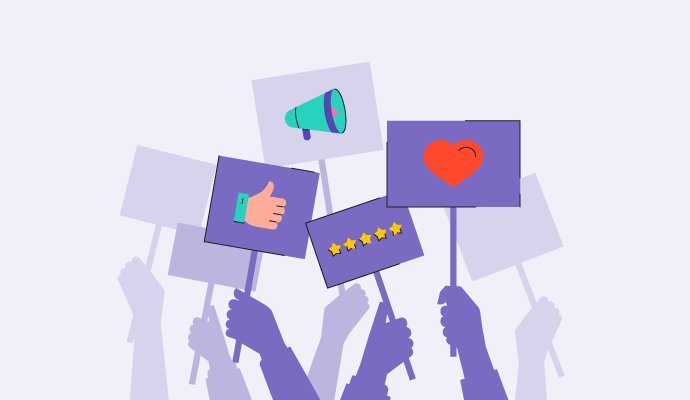Mahatma Mohandas K. Gandhi once famously said, “If we change ourselves, the tendencies in the world will also change.”
Following through on this sentiment is easier said than done. It takes time and effort to find ways to make an impact and change the community for the better. The beginning of the change is public advocacy.
What is public advocacy?
Public advocacy is the act of supporting a particular cause, idea, or policy to influence public opinion, government decisions, or corporate actions. It involves championing issues that impact the broader community or society.
Public advocates, also known as activists or advocates, seek to create awareness, promote change, and bring about positive outcomes for the issues they are passionate about.
Companies looking to mobilize an audience around an issue often turn to public affairs and advocacy software. Nonprofits, associations, and corporations can use these tools to educate and mobilize supporters through outbound email marketing, text messaging, and social media communication.
Types of public advocacy
Organizations and individuals can take part in several types of public advocacy. Some of them that may intrigue you are here below.
- Awareness campaigns raise public consciousness about a particular problem, issue, or social injustice to rally support and encourage action.
- Lobbying involves communicating directly when members of U.S. Congress or other government officials to influence policy changes and to promote specific legislation and regulations. These tactics can take the form of in-person meetings, written communications, or phone calls.
- Media campaigns and communications use various media platforms, such as social media, press releases, digital advertising, articles, and public speaking, to disseminate information, amplify understanding, and influence public opinion to create a sense of urgency around policy changes.
- Coalition building is about collaborating with other like-minded organizations or individuals to enhance the impact and reach of their advocacy efforts.
- Grassroots organizing mobilizes individuals and communities at the local level to support and advocate for causes. This ground-up approach to public policy advocacy occurs when citizens come together to make their voices heard by elected officials and other decision-makers. These can be simple campaigns, like writing a letter to Congress or signing a petition.
- Legal advocacy uses the legal system to challenge laws or policies that are seen as unjust or to defend the rights of affected individuals or groups.
- Consumer activism encourages people to make informed choices and use their purchasing power to support ethical and sustainable practices. Typically a component of grassroots campaigns, activists raise awareness about issues by participating in protests or demonstrations. Demonstrations can be as straightforward as holding signs on a sidewalk to as extreme as handcuffing yourself to a tree.
- Advising, seen as a part of bigger lobbying and media campaigns, educates decision-makers to persuade them to a favorable position.
Quer aprender mais sobre Software de Campanha Política? Explore os produtos de Campanha Política.
Importance of public advocacy
Public advocacy can lead to incredible benefits for society. It’s essential because doing so often:
- Lifts voices. Public advocacy allows individuals and groups to get their voices and opinions heard to draw attention to issues that may have gone unnoticed, overlooked, or ignored. Giving this platform to underrepresented or marginalized communities is important so they can share their experiences and concerns.
- Evokes social change. Those looking to make a change, raise awareness, mobilize public support, and advocate for policy reforms often do so through public advocacy. It can result in positive and meaningful changes within society.
- Holds the government accountable. As a society, putting pressure on the government and policymakers can guarantee they’re held accountable for their actions and decisions. It also reminds those holding government seats that they serve the public and should do so with their constituents’ best interests in mind.
- Protects rights. Public advocacy can be crucial in promoting and devising human rights, social justice, and civil liberties. Protecting individuals and vulnerable groups from injustice, oppression, and discrimination is the foundation of public advocacy.
- Addresses inequities. Many advocacy efforts focus on addressing economic, social, and environmental inequalities. Individuals and groups advocate for equitable policies and practices and strive to create a fairer society.
- Tackles global challenges. From climate change to poverty to public health crises, public advocacy takes on many global challenges to find solutions.
- Preserves the environment. Those striving for environmental advocacy play a significant role in protecting natural resources, encouraging sustainability practices, and conserving biodiversity.
Examples of public advocacy
No matter what social cause you’re passionate about, a public advocacy campaign or group is likely at its center. Below are some examples of public advocacy in the United States and worldwide.
Marriage equality advocacy
Marriage Equality USA is an organization that began in 1996 with just a handful of activists who believed same-sex couples should have the right to civil marriage in the United States. Marriage Equality, Inc. was founded in 1998.
After a long road of protests, rallying, legal hearings, and countless hurdles, nationwide marriage equality was granted in the United States on June 26, 2015. In a landmark 5-4 decision, marriage equality became the law and granted same-sex couples in all 50 states the right to full, equal recognition under the law.
Unfortunately, the fight isn’t over, as more than 525 anti-LGBTQ+ bills have been introduced in 41 states in 2023, and more than 75 have become law. Public advocacy takes place in many forms all over the US to protect the rights of same-sex couples.
Source: Center for American Progress
Dakota Access Pipeline
The Dakota Access Pipeline is a 1,172-mile underground 30" pipeline that transports crude oil from the Bakken and Three Forks production area in North Dakota to Patoka, Illinois. While this pipeline can move up to 750,000 barrels of oil per day, there has also been the potential to destroy ancestral burial grounds and poison the water supply for a sovereign nation – as well as millions of Americans downstream who rely on the Missouri River.
In September 2016, the Standing Rock Sioux Tribe issued a statement saying Energy Transfer Partners demolished an area during the construction of the pipeline that contained "significant Native artifacts and sacred sites." This was a two-mile-long area near the Lake Oahe river crossing and north of the Standing Rock Sioux Reservation.
Despite a string of protests, some turning violent, requests to stop the pipeline construction were denied, and the pipeline was created.
Source: Daily Northwestern
March for Our Lives
Following the Marjory Stoneman Douglas High School shooting in Parkland, Florida, on February 14, 2018, March for Our Lives was created as a youth-led movement dedicated to promoting civic engagement, education, and direct action by youth to eliminate the epidemic of gun violence.
The March for Our Lives movement organized the largest single day of protest against gun violence in history, during which millions of Americans came together to protest the political inaction of this nation's leaders. The movement has also held 450 marches worldwide, leading to 20 new state laws to curb gun violence and the bipartisan Safer Communities Act, the first federal legislation on guns in 30 years.
Source: CNN
Black Lives Matter protests
Black Lives Matter (BLM) is a political and social movement aimed at bringing attention to racism, discrimination, and racial inequality experienced by Black people while promoting anti-racism. The main concerns of this movement are incidents involving police brutality and racially motivated violence against Black people.
The movement began in July 2013, after George Zimmerman was acquitted of the shooting and killing of teenager Trayvon Martin in February 2012. The BLM movement became nationally recognized following its 2014 protests of two more African American men, Michael Brown in Ferguson, Missouri, and Eric Garner in New York City.
Black Lives Matter continued to make headlines and gained international attention during the 2020 George Floyd protests following his murder by Minneapolis police officer Derek Chauvin.
Source: Time
Climate activism by Greta Thunberg
Greta Thunberg is a Swedish environmental activist and founder of Fridays for Future, known for challenging world leaders to take immediate action for climate change mitigation. In 2018, at 15, Thunberg began spending her Fridays outside the Swedish Parliament to call for stronger action on climate change by holding up a sign reading Skolstrejk för klimatet, which translates to school strike for climate.
From there, she began to get noticed for her age and straightforward speaking manner, both in public and to political leaders and assemblies. She often criticizes world leaders for failing to take sufficient action to address the climate crisis.
In 2018, Thunberg addressed the United Nations Climate Change Conference, while student strikes took place every week around the world. She also attended the 2019 UN Climate Action Summit, where her speech included the now-famous line, “How dare you?” It was widely discussed in the press and even incorporated into music.
Source: Foreign Policy
Best public affairs and advocacy software
Public affairs and advocate software makes it possible for companies to engage, acquire, and assemble specific audiences around issue advocacy in electoral, legislative, and regulatory spaces.
Corporations, associations, and nonprofits use these tools to inform and mobilize supporters through text messaging, social media, and outbound email marketing. Grassroots activist groups might also use these tools to build momentum surrounding social causes, petitions, and key legislative issues.
It’s common for this type of software to support fundraising and campaign efforts for various advocacy groups.
To qualify for inclusion in the public affairs and advocacy category, a product must:
- Offer one or more outbound communications channels like social media, email, and text messaging
- Provide advocate acquisition and mobilization features
- Have stakeholder management components, like legislator databases and relationship and meeting tracking
- Assist with direct correspondence from advocates to targeted government officials
* Below are the top five leading public affairs and advocacy software solutions based on G2 Score, pulled from G2 on July 24, 2023. Some reviews may be edited for clarity.
1. Quorum
Quorum is a public affairs tool that professionals use to work on local, state, federal, and international issues. Its goal is to help users move faster to identify trends, work smarter, and understand organizational impact.
What users like best:
“Quorum’s software helps you track, change, and report on policies, create grassroots campaigns, and manage interactions all in one place. It puts you in charge of your work and gives you access to many cool resources – databases, action center, and texting capacities.”
- Quorum Review, Tapiwa J.
What users dislike:
“There is potential to be overwhelmed by the amount of info available inside Quorum. It’s possible to be paralyzed by the information if it’s not organized properly. While the Quorum school that is the onboarding for Quorum attempts to assist in helping users organize their accounts, a more personalized one-on-one session between a Quorum team member and user (or group of users from the same organization) would be beneficial.”
- Quorum Review, Josh F.
2. Engaging Networks
Engaging Networks is for nonprofits looking to maximize their impact with online fundraising and advocacy digital engagement tools. Nonprofits working in every field, from human rights to disaster relief, use Engaging Networks to raise money, advance their missions, and uplift communities.
What users like best:
“I've been using Engaging Networks for a few years now, and I've found it a fantastic tool to help our charity's advocacy and campaigning work. It's very user-friendly, fully customizable, and has helped take our campaigning work to the next level. They also have very useful training modules and support to help those with no experience using it before.”
- Engaging Networks Review, Alessandra S.
What users dislike:
“What I dislike about Engaging Networks is how you can be limited in what you can do, specifically in the email builder. Incorporating videos and/or GIFs in emails would be great!”
- Engaging Networks Review, Dara L.
3. Muster
Muster is an advocacy platform that aims to simplify stakeholders' engagement with grassroots advocacy campaigns by refining advocate management and segmentation. You can also create highly customized advocacy campaigns that fit your organization's brand.
What users like best:
“Muster is a great overall value. It provides us with everything we need in strategic grassroots advocacy software. Muster takes it to the next level by better informing our congressional engagements and analyzing which districts receive our correspondence. This allows us to tailor our messaging and make in-roads with members with whom we may not have had prior relationships.”
- Muster Review, Blaise L.
What users dislike:
“I would like to see an upgrade that allows different fonts and message formatting.”
- Muster Review, Amy R.
4. LegiStorm
LegiStorm is a comprehensive congressional database providing detailed and accurate congressional staff contact information beyond phone numbers and email addresses. It researches, verifies, and publishes information about members of U.S. Congress and congressional staff.
What users like best:
“Legistorm aggregates all the data and provides contact information. As a political staffer, this is an invaluable resource! I always refer to LegiStorm when looking up office contacts, salary info, and more. I highly recommend people get an account.”
- LegiStorm Review, Verified User in Government Administration
What users dislike:
“I wish that the contact information for former Congressional employees was also kept up to date. Once they leave U.S. Congress, it's hit or miss if the info is there.”
- LegiStorm Review, Michael S.
5. NationBuilder
NationBuilder assists in website creation for high-stakes campaigns and movements. It offers features like readymade website templates, a fully integrated supporter database, petitioning, simplified fundraising and donor management, and advanced email and texting.
What users like best:
“The features and data available to successfully engage our community are amazing! You have fundraising, voter profiles, information pages, membership, engagement, events, and marketing all wrapped into one.”
- NationBuilder Review, Hugh M.
What users dislike:
“Support takes days to get back in contact with you. Donation tracking can sometimes get messy because of integration with external payment processors.”
- NationBuilder Review, Curran H.
Fight for your rights
Public advocacy activists stand for societal progress to reshape policies, challenge social norms, and create a more compassionate world. With the goals of leading conversations, mobilizing communities, and holding government agencies accountable, public advocacy plays a big part in building a brighter future for generations to come.
Looking to manage campaigns, donations, and fundraising events for elections? Political campaign software can help take care of resources and increase voter engagement.

Mara Calvello
Mara Calvello is a Content and Communications Manager at G2. She received her Bachelor of Arts degree from Elmhurst College (now Elmhurst University). Mara writes customer marketing content, while also focusing on social media and communications for G2. She previously wrote content to support our G2 Tea newsletter, as well as categories on artificial intelligence, natural language understanding (NLU), AI code generation, synthetic data, and more. In her spare time, she's out exploring with her rescue dog Zeke or enjoying a good book.


